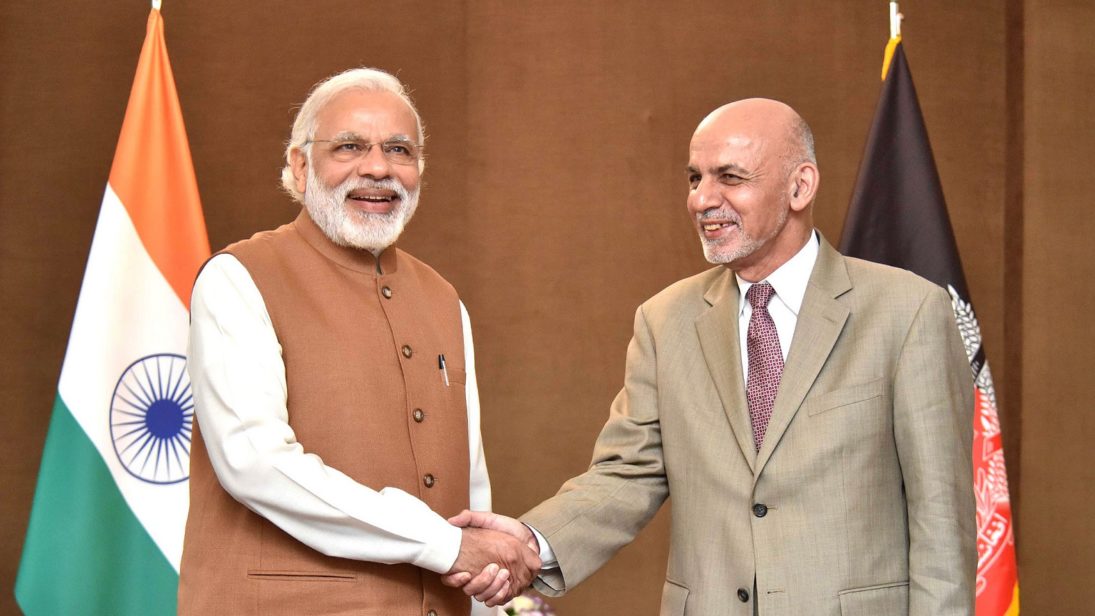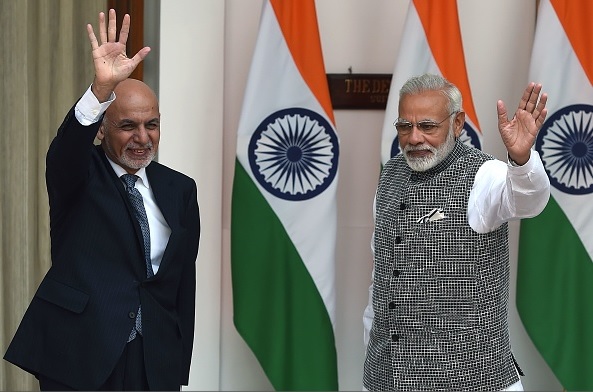
Strategy, opportunity, change, and hope were four keywords enunciated by Afghan President Ashraf Ghani during a speech about Afghanistan’s future during his day-long working visit to India last week. Though his word choice was optimistic, history warns us to have different expectations. As of now, the new American strategy in Afghanistan, announced by President Trump in August, is in its early stages. Strategies “drafted in close coordination with international partners” will be used to guide Afghanistan in the next four years—a plan in which the role of India seems to be crucial. Indeed, in his speech announcing the shift in strategy, Trump urged India to work more with the United States in Afghanistan. Trump’s strategy in Afghanistan appears to resemble Obama’s in most respects. In fact, the new American policy has initiated a similar cycle of a renewed “strategy” to create “opportunity” to bring positive “change” in Afghanistan by breaking the status quo of continuous violence to retain “hope” for the future. However, Trump’s decision to proclaim India a crucial regional partner is distinct. Afghanistan is on board with this change: reiterating his support for Trump’s new strategy, Ghani acknowledged India’s role in this “multidimensional strategy” during his visit to New Delhi last week. It is now necessary to ask, how does the recent visit to India by President Ghani stand out, and how will new strategies bring about a change in the current situation in Afghanistan?
Security
After President Trump’s speech on Afghanistan, there has been a visible and drastic surge in bilateral and multilateral meetings in the region on the security situation in Afghanistan. In this regard, President Ghani’s visit to India is third in a string of high-level visits. Afghan Foreign Minister Salahuddin Rabbani and CEO Abdullah Abdullah visited India in September, where the two countries signed a bilateral Memorandum of Understanding (MoU) for Technical Cooperation on Police Training and Development. This was followed by the Indian National Security Advisor Ajit Doval’s visit to Kabul, who extended Prime Minister Modi’s invitation to the Afghan president to visit India. During Ghani’s subsequent visit to New Delhi, the two heads of state addressed the future of defense cooperation between India and Afghanistan. In the past, India has been reluctant to export arms to Afghanistan in light of Pakistan’s sensitivities. Except for four MI 25 helicopters delivered to Kabul in 2015, India has not moved forward with the requests from Afghan leaders for defense assistance. During this visit, however, India “agreed to extend further assistance depending upon the needs of the Afghan defense and police forces,” according to a press release.
It remains to be seen how India will respond to the needs of these forces in the near future. To strengthen the Afghan National Army in the long-term, defense production capabilities are crucial. In the past, India had plans to help Russia cover the costs of restoring Afghanistan’s own Soviet-built arms industry. At present, India has the opportunity to play a vital role in this domain, particularly given the help of the United States. It is clear now, however, that Afghanistan is interested in ramping up the scale of India-led training programs for Afghan forces. Thousands of Afghan National Army (ANA) officers have already been trained in Indian military academies following the signing of the India-Afghanistan Strategic Partnership Agreement in 2011. Since President Trump’s announcement, India and Afghanistan have already indicated that they intend to expand this training program to Afghan police forces. Given the training needs of the Afghan defense and police forces and the likelihood that the ANA will be tasked with defending recaptured territory from Taliban attacks, this cooperation has been a bright spot in India-Afghan relations since Trump’s Afghan policy speech.

Connectivity
On the connectivity issue, President Ghani reemphasized his stand, saying that his country will not be a part of the China-Pakistan Economic Corridor (CPEC) unless it is given access to Pakistan’s Wagah and Attari border, which would effectively grant Afghanistan a direct land route to India. Recently, Ghani has issued a decree “banning Pakistani trucks from entering the country via the Torkham and Spin Boldak border crossings” due to the expiration of the transit and trade agreement between the two countries. It is not known for how long this ban will continue. However, it has certainly had a negative impact on trade between the two countries, as Afghanistan is diverting its trade towards Iran and Central Asian countries, as well as India via the India-Afghan air corridor, while the long-hyped India-Afghanistan-Iran trilateral Chabahar Port Agreement is being operationalized.
Traditionally, Afghanistan was dependent on Pakistan for its exports and imports. President Karzai signed the Afghanistan-Pakistan Transit Trade Agreement (APTTA) in 2010. In 2011, trade between the two countries crossed the $2 billion mark. But with new trading partners and operationalization of new routes, Pakistan’s monopoly on the Afghan market has been threatened and trade came down to $1.5 billion last year. At the same time, Indian trade with Afghanistan is on the rise, with India being Afghanistan’s top export destination. Thus, the connectivity aspect was an important issue discussed during President Ghani’s visit.
Conclusion
President Ghani’s visit to India was the first in what appears to be a new era of U.S.-India-Afghanistan trilateral cooperation to improve the situation in Afghanistan. It is no mistake that Ghani’s arrival in Delhi coincided with the visit of U.S. Secretary of State Rex Tillerson, who had also visited Afghanistan and Pakistan before heading to India. In New Delhi, Tillerson and his Indian counterpart discussed “ways for effective implementation of the new strategy of President Trump on Afghanistan and South Asia.” The Trump administration’s plans have begun to bear fruit: India has pledged to improve Afghan capacity-building by investing in 116 developmental projects and training Afghan police forces while the United States has advanced its counterterrorism mission by increasing drone strikes near the Af-Pak border and placing pressure on Pakistan to eliminate terrorist safe havens on their soil. Given this backdrop, it is clear that the recent visit of President Ghani to India was an important moment for the future of Afghanistan. By giving Afghanistan an opportunity to strengthen its forces and build its economy, India and the United States have begun to put in place a regional strategy for a stable Afghanistan.
***
Image 1: Narendra Modi via Flickr
Image 2: Money Sharma/AFP via Getty Images


